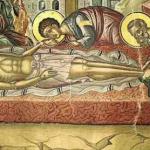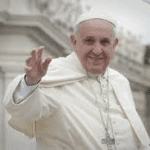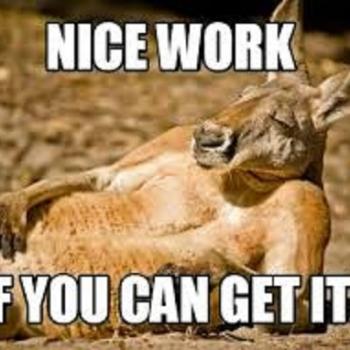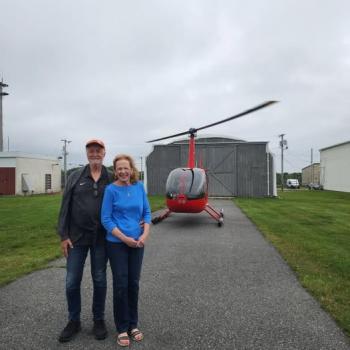Easter is the celebration of the promise of hope, the promise of new life, that surely after darkness there is light, and that within the deepest betrayals lie the possibilities of forgiveness.
Yet as Barbara Johnson writes, “[W]e are Easter people living in a Good Friday world,” a world that provides more Good Friday moments on a daily basis. Eventually the joy of Easter and what follows in its wake fades. What then? The lectionary texts for Easter Sunday and the Easter season that follows hit all of the familiar highs, but do not flinch from placing them in the context of fear, danger, betrayal, and unbelief. As Kate Bowler writes, “[T]there is no cure for being human”—the Easter season explores what happens when the highest of highs meets the reality of daily existence.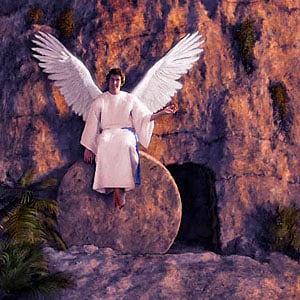
The lectionary gospel readings for Easter Sunday are from John’s gospel, with an alternative available from one of the synoptic gospels in each year. As is often the case, each gospel account differs both in details and timeline. Rather than getting hung up on facts and details—none of which we can know with certainty two millennia after the fact—it is important to remember the difference between faith and fact. Although something happened on Easter morning, faith is not dependent on any particular detail being true. Faith is expressed not in certainty about details, but rather in how one lives out the deeper meanings of the story.
When she was a puppy, our corgi Bovina developed a routine for greeting the sun as it peeked its head over our backyard privacy fence each morning. The first morning rays reflect off our back storm door; if someone moves the door back and forth, the reflection moves along the side and back fence. Everyone rises before the sun gets up at our house—Bovina immediately insists on going into the backyard and occasionally barking until the sun rises, then barking even more until an accommodating parent moves the door so she can joyously and noisily chase the reflection. Even as a young adult a couple of years later, Bovina still waits patiently to greet the dawn every morning, even though the new house built in the empty lot behind us now blocks the rising sun’s rays from shining on our back door. She gives new meaning to “I will sing and make melody . . . I will awake the dawn” from Psalm 108.
developed a routine for greeting the sun as it peeked its head over our backyard privacy fence each morning. The first morning rays reflect off our back storm door; if someone moves the door back and forth, the reflection moves along the side and back fence. Everyone rises before the sun gets up at our house—Bovina immediately insists on going into the backyard and occasionally barking until the sun rises, then barking even more until an accommodating parent moves the door so she can joyously and noisily chase the reflection. Even as a young adult a couple of years later, Bovina still waits patiently to greet the dawn every morning, even though the new house built in the empty lot behind us now blocks the rising sun’s rays from shining on our back door. She gives new meaning to “I will sing and make melody . . . I will awake the dawn” from Psalm 108.
Bovina’s routine reminds me of my family’s “Sunrise Service” routine every Easter morning during my youth. The heartier members of our small Baptist church would gather a half hour or so before sunrise at the home of a family whose house was on a ridge overlooking our Vermont town’s valley. Looking east across the valley from their backyard, I could see the two ski areas where I had spent every free winter moment over the past months, even when the temperature was well below zero.
As sunrise approached, the pastor would read from one of the gospel accounts of early Easter morning, seeking to hit “Why do you seek the living among the dead?” or “Woman, why are you weeping?” depending on the gospel being read, just as the sun peeked its head over Burke Mountain. Of course, there were some Easters when it was raining, and I remember at least one when it was snowing—on those occasions we did our business in the living room looking out the glass doors and windows toward the east. We were all hardy New Englanders, but hardiness has its limits.
I am a morning person, so I’ll take sunrise over sunset any day. I’ve experienced many sunrises over the years walking onto my college’s beautiful campus headed east to my office or the gym. 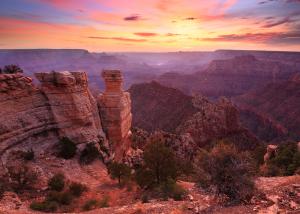 But the most memorable sunrise I ever experienced was in my early teens when my father, my older brother, and I visited the Grand Canyon. From one of the South Rim points, we gathered with a few dozen other folks to await the dawn. There was no sound other than the breeze.
But the most memorable sunrise I ever experienced was in my early teens when my father, my older brother, and I visited the Grand Canyon. From one of the South Rim points, we gathered with a few dozen other folks to await the dawn. There was no sound other than the breeze.
Until, that is, a three- or four-year-old ran screaming through the group delighted by something or other. “SSSSHHHHH!” the child’s parents and everyone else immediately said, just as they would probably have done if the kid had run up and down an aisle in church making the same racket. The sunrise a few minutes later was a sacred event—we were all standing on holy ground.
I like the Psalmist’s claim that “I will awake the dawn.” It implies that the dawn is more than just a product of physical laws and forces—we have something to do with it. Of course, the sun rises every morning whether anyone is watching or not, but we have the capacity to participate in its meaning and value. Certainly the stories of those who encountered an empty tomb, then experienced the resurrected Jesus on that first Easter morning make the empty tomb that much more poignant and sacred. The family, friends, and followers of Jesus had thought everything was over. But as Zerah in Jesus of Nazareth says when looking into the empty tomb, “Now it begins.”
It is easy to forget the pain and suffering that led to the Resurrection. It is also easy to overlook that each of the gospel Easter accounts report that the initial reactions of those who first saw the empty tomb included both confusion and terror. Pain, suffering, death, fear, and uncertainty remain parts of human experience and reality. And yet . . . everything has changed.
For reflection: Imagine that you were one of the first to find the stone at Jesus’s tomb rolled away and the tomb empty on that first Easter morning. Be honest—what would your reaction have been?


